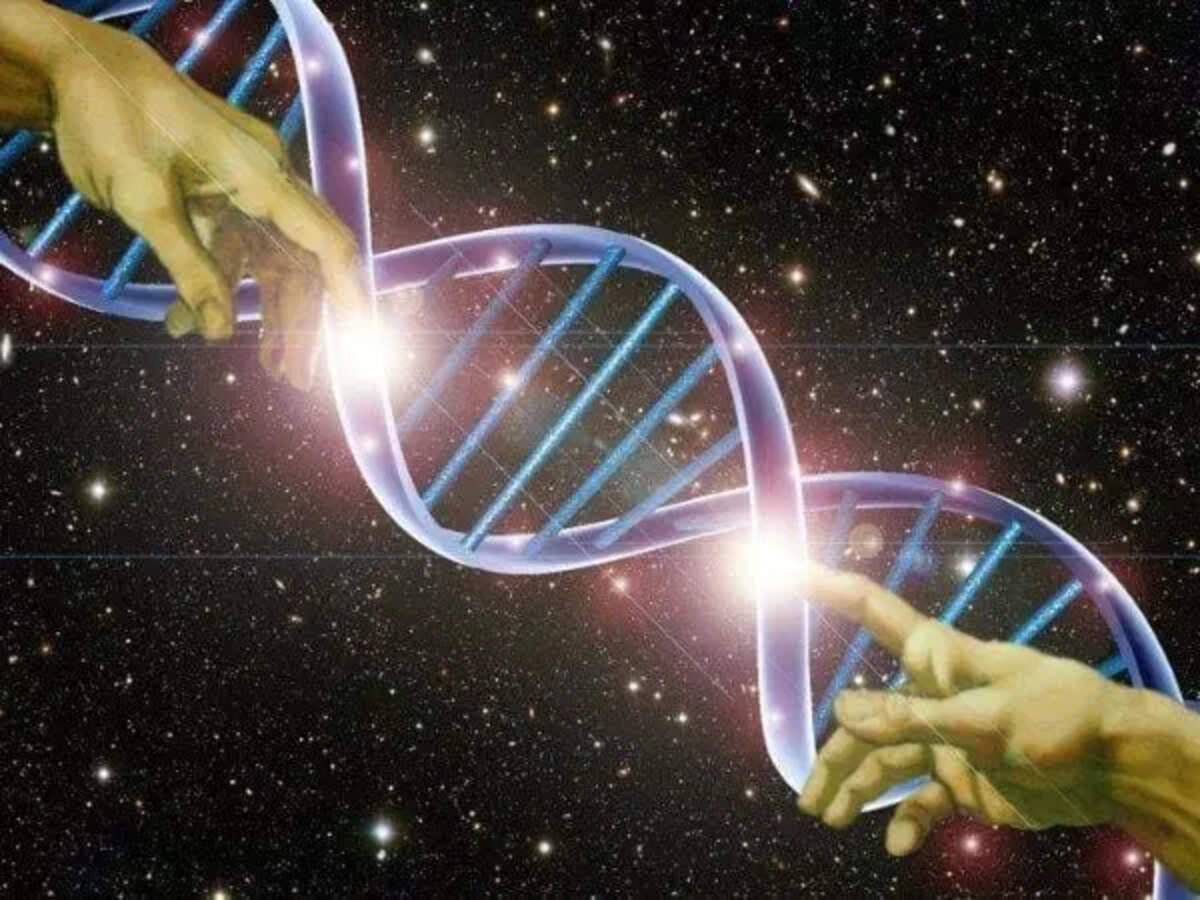Science
New Study Suggests Possible Alien DNA in Human Genome

A recent study led by Dr. Max Rempel from the DNA Resonance Research Foundation suggests the possibility of alien DNA being present in human genomes. By analyzing genetic data from the 1,000 Genomes Project and results from 23andMe, the research indicates that certain individuals, self-identified as alien abductees, may carry genetic markers that do not match their biological parents. This controversial claim, which remains unverified and has yet to undergo peer review, explores the implications of potential extraterrestrial influence on human genetics.
The analysis included DNA from 581 families within the 1,000 Genomes Project. In 11 of these families, researchers identified large DNA sequences that were non-parental, totaling 348 genetic variants that could not be traced back to either parent. Since all the subjects were born prior to 1990, the study ruled out modern gene-editing technologies, such as CRISPR, which were developed post-2013.
In addition to the genomic analysis, Dr. Rempel examined 23andMe data from individuals who claim to have experienced alien abductions. Some families in this group exhibited non-parental genetic markers. Should these findings be confirmed, Dr. Rempel posits that it could be possible to identify humans with alien DNA and distinguish potential hybrids. This hypothesis aligns with long-standing themes in science fiction regarding hidden alien influences within human populations.
Dr. Rempel speculates that alien DNA might be linked to various traits, including autism, ADHD, and Asperger’s syndrome. He emphasizes that this connection is unverified and should be approached with caution, as the implications of extraterrestrial genetic modifications could suggest enhanced human capabilities, such as telepathy. These ideas, while intriguing, remain purely speculative at this stage.
While Dr. Rempel holds a PhD from the Institute of Gene Biology in Moscow, he acknowledges the limitations of his research. He argues that current commercial genotyping services lack the precision needed to substantiate such extraordinary claims. To advance this inquiry, he advocates for the use of next-generation sequencing (NGS) or whole-genome sequencing (WGS) to uncover novel genetic variants with greater resolution. His future research aims to analyze parent-child combinations among self-identified alien abductees to further investigate possible alien DNA insertions.
The assertion of alien DNA in human genomes parallels other fringe theories regarding alien-human hybrids, such as claims surrounding the Nazca mummies. These theories often blend anecdotal evidence with scientific inquiry, placing researchers like Dr. Rempel in a contentious area of study.
Expert voices in the field urge caution regarding these findings. Nigel Watson, author of “Portraits of Alien Encounters Revisited,” highlights the small sample size and the inherent challenges in studying individuals who report alien abduction experiences. He points out that such experiences can stem from various terrestrial factors, underscoring the necessity for rigorous verification before drawing conclusions about the genetic implications of these claims. Watson does support further genetic research on volunteer abductees, suggesting it could yield significant insights comparable to recovering physical evidence of extraterrestrial life.
Dr. Rempel asserts that the potential for alien hybridization raises profound questions for humanity. He has even suggested that society may need to evaluate which extraterrestrial races and levels of hybridization could be beneficial for the planet. Such statements prompt broader societal and ethical discussions, even in the absence of verified evidence.
In summary, this study raises intriguing questions about the intersections of genetics, human identity, and the possibility of extraterrestrial influence. As research continues, the scientific community will be watching closely for further developments and confirmations of these extraordinary claims.
-

 World5 months ago
World5 months agoSBI Announces QIP Floor Price at ₹811.05 Per Share
-

 Lifestyle5 months ago
Lifestyle5 months agoCept Unveils ₹3.1 Crore Urban Mobility Plan for Sustainable Growth
-

 Science4 months ago
Science4 months agoNew Blood Group Discovered in South Indian Woman at Rotary Centre
-

 World5 months ago
World5 months agoTorrential Rains Cause Flash Flooding in New York and New Jersey
-

 Top Stories5 months ago
Top Stories5 months agoKonkani Cultural Organisation to Host Pearl Jubilee in Abu Dhabi
-

 Sports4 months ago
Sports4 months agoBroad Advocates for Bowling Change Ahead of Final Test Against India
-

 Science5 months ago
Science5 months agoNothing Headphone 1 Review: A Bold Contender in Audio Design
-

 Top Stories5 months ago
Top Stories5 months agoAir India Crash Investigation Highlights Boeing Fuel Switch Concerns
-

 Business5 months ago
Business5 months agoIndian Stock Market Rebounds: Sensex and Nifty Rise After Four-Day Decline
-

 Sports4 months ago
Sports4 months agoCristian Totti Retires at 19: Pressure of Fame Takes Toll
-

 Politics5 months ago
Politics5 months agoAbandoned Doberman Finds New Home After Journey to Prague
-

 Top Stories5 months ago
Top Stories5 months agoPatna Bank Manager Abhishek Varun Found Dead in Well









